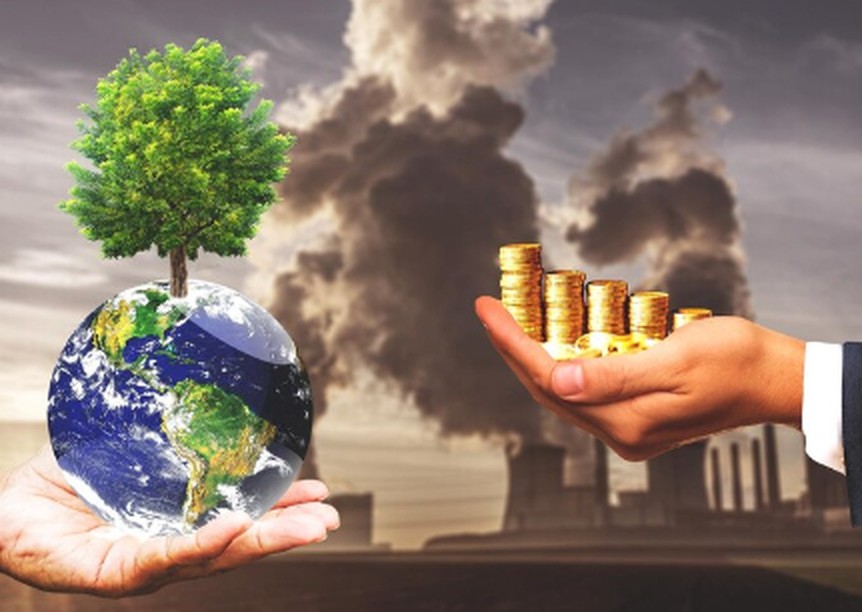As the effects of climate change grow more pronounced, investors are reevaluating long-term strategies to adapt to new environmental, regulatory, and market realities. In the U.S., climate-related factors are increasingly influencing asset allocation, corporate planning, and sectoral prioritization.
Long-term investment strategies must now consider not only economic forecasts and geopolitical developments but also the profound influence of climate risk. Extreme weather events, rising sea levels, and shifting consumer expectations are all playing a role in reshaping the financial landscape across multiple industries.
Climate Resilience and Sectoral Divergence: A New Investment Paradigm

With the growing emphasis on sustainability, investors are differentiating between sectors likely to benefit from climate adaptation and those more exposed to disruption. Some industries stand to thrive, while others may face mounting operational and reputational challenges.
Utilities transitioning to renewable energy, for instance, are gaining favor due to federal incentives and falling production costs. Conversely, fossil fuel–dependent industries may suffer from declining demand and regulatory constraints, making them less attractive in long-term projections.
Renewable Energy: An Emerging Pillar of Stability and Growth
The clean energy sector is rapidly becoming one of the most attractive and promising areas for long-term gains, driven by strong policy incentives, rapid technological innovation, and growing global demand for sustainable energy alternatives. Technological advances, policy support, and consumer demand are converging to accelerate growth in:
- Solar and wind energy production
- Battery storage technologies
- Green hydrogen development
- Smart grid modernization
Investors who pivot early toward these innovations may secure significant long-term gains, as the ongoing energy transition not only transforms national infrastructure but also redefines labor markets, stimulates new business models, and reinforces sustainable economic development across multiple U.S. regions.
Real Estate and Insurance: Navigating Physical Risk
Real estate investment trusts (REITs) and insurance providers are particularly vulnerable to the physical effects of climate change. Rising sea levels and wildfire risks in regions like California and Florida are reshaping valuations and underwriting models.
To adapt, firms are incorporating climate risk modeling into asset pricing and coverage policies. Properties designed with sustainability in mind—such as those built to withstand extreme weather—may offer long-term security and value, while exposed assets may underperform or lose insurability altogether.
Agriculture and Water Resources: Facing Pressure from a Changing Climate
U.S. agriculture is already experiencing the effects of climate variability, including droughts, floods, and shifting growing seasons. These changes can disrupt supply chains, reduce yields, and increase costs. While this creates clear risks, it also opens up new investment avenues:
- Precision agriculture technologies that optimize water and fertilizer use
- Controlled-environment agriculture such as vertical farming
- Water purification and infrastructure solutions
Investors who prioritize innovation and resilience in these sectors play a vital role in advancing food security, fostering adaptive agricultural practices, and enabling sustainable resource use, all while positioning their portfolios to capture consistent and long-term financial value in a shifting global climate.
Regulatory and Disclosure Landscape: Preparing for Policy Shifts
The Securities and Exchange Commission (SEC) is expanding its climate disclosure requirements, pushing companies to be more transparent about their environmental impact and risk management strategies.
Investors who understand these regulations can better assess which companies are prepared for future compliance and which may face legal or reputational headwinds. Such regulatory clarity can also reduce uncertainty and help direct capital toward more sustainable and responsible enterprises.
Conclusion: Rethinking the Future Through a Climate Lens
Investing with an awareness of climate change is no longer a niche strategy—it’s a financial imperative. As the U.S. economy adapts, long-term investors must scrutinize sectoral exposure, assess physical and regulatory risks, and identify innovation-driven opportunities that support both growth and sustainability.
Adopting a climate-conscious approach to investment is not just about mitigating downside—it’s about seizing the upside of a rapidly transforming world. In doing so, investors can align financial performance with long-term resilience and broader environmental goals.

